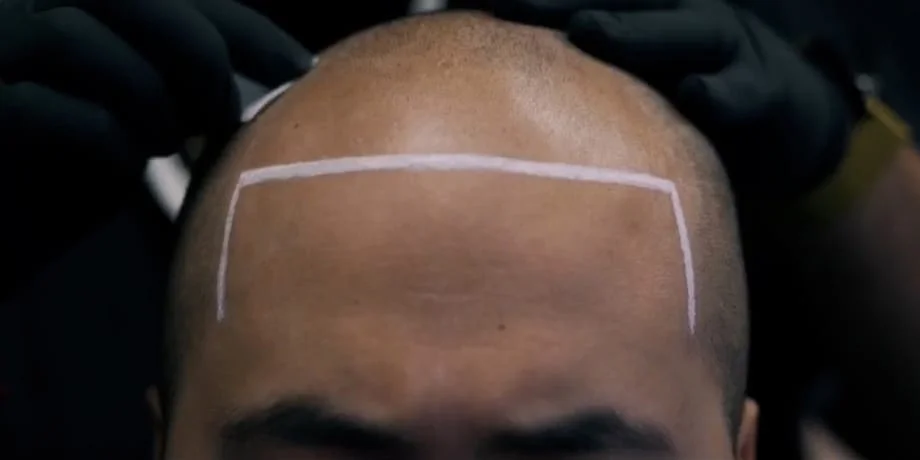Whether partial or complete, hair loss can be a sensitive topic for many, especially those who suffer from it. Scalp micropigmentation (SMP) has become a popular choice, as technology and techniques have evolved to the point where it can mimic short hair and even give a fresh buzz cut look. When performed by experienced professionals, results are realistic and long-lasting. Here is more information about the science behind scalp micropigmentation:
Scalp Micropigmentation Process
The non-invasive procedure consists of adding pigment-filled impressions to the scalp’s surface, mimicking tiny hair follicles. It’s a versatile solution for both complete and partial baldness, as it blends well with your natural hair and helps create the perception of fullness in areas with thinning or missing hair. The complete treatment typically takes two to four sessions, during which small impressions are strategically placed across the scalp, with more details added throughout the appointments.
High-Precision Needles and Motors
Traditional tattoos use different tools and techniques, including needles and pigments. Tattoo ink usually reaches a deeper skin layer, which can lead to fading and discoloration over time. Micropigmentation artists use specialized equipment, including single-use nano-needles and SMP machines. Unlike bulky tattoo guns, SMP machines are usually lightweight and calibrated to deposit pigment shallowly onto the skin. They feature low-speed, high-precision motors designed for use on the delicate surface of the scalp. The use of dedicated tools allows practitioners to create a natural and uniform appearance.
Ability to Camouflage Scarring
SMP treatments can help camouflage multiple types of scarring with the appearance of hair follicles. SMP artists can delicately deposit pigment directly into the scar tissue and surrounding area to help blend imperfections. It helps to diminish the appearance of scarring. Sometimes, scars on the scalp are visible because of the absence of hair. SMP treatments can help cover up strip scarring, FUE/FUT scarring, plug scarring, alopecia scarring, and scarring from accidents. Artists can correct poorly executed SMP treatments from other clinics.
Micropigmentation Expectations
The ideal candidate for scalp micropigmentation could be anyone experiencing varying degrees and patterns of hair loss. Women suffering from alopecia might use the procedure to help camouflage affected areas. For men who previously had a hair transplant, micropigmentation can be used to make scars less visible. Other things to note about scalp micropigmentation include the following:
- Minimal discomfort: For most people undergoing the treatment, the discomfort is minimal. Since you’re awake for the procedure, you can communicate with the artist throughout the process and let them know if you’re feeling uncomfortable.
- Treatment duration: The treatment duration depends on the area being treated. Each session typically lasts between two and four hours, taking place 10 to 20 days apart.
- Downtime expectations: The results are designed to match your natural hair. You can usually resume using hair restoration products after 30 days following the procedure.
- Level of realism: The results will closely mimic a natural hairline if performed by a skilled practitioner. They have the technique to match your color and natural hairline seamlessly.
- Pigment duration: The pigment will gradually fade over four to six years. You can get your scalp micropigmentation refreshed with a touch-up session after some time.
Recovery and Post-Treatment Care
Once your scalp micropigmentation is done, there are a few steps to be taken to make sure it heals correctly and safely. Your practitioner might advise you to avoid direct sunlight, swimming, and activities that could cause you to sweat too much in the first few days. To help preserve the integrity of the pigment, try using a more gentle, fragrance-free shampoo. The less abrasive scalp products you use, the better. If everything is done correctly, you shouldn’t take more than a few days to feel fully healed. By choosing a good professional, you should be able to get a realistic result that lasts for years.
Choose the Right SMP Practitioner
Scalp micropigmentation should be done by a trained artist, preferably at specialized clinics. They take safety precautions, such as using sterile and disposable materials like gloves and needle cartridges. Try looking for clinics with substantial portfolios, experienced artists, and one that can provide before-and-after photos. Find an SMP clinic with trained artists who can provide a natural-looking hairline without undergoing costly surgeries.
